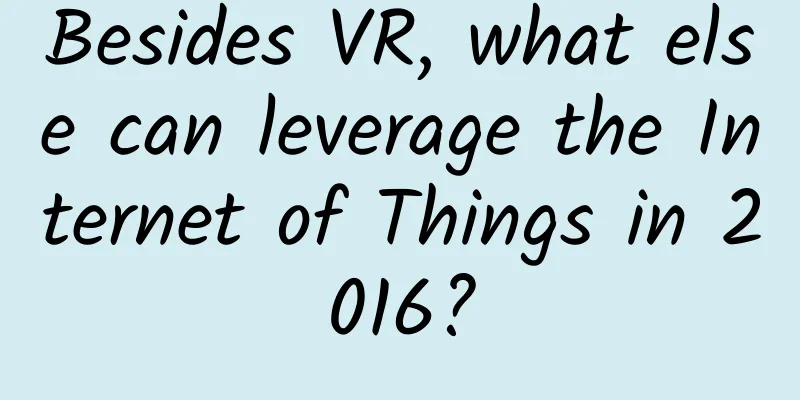The first DX12 game "Ashes of the Singularity" AN card review

|
Microsoft officially released a new generation of API - DirectX 12 (DX12) at GDC 2014. Compared with DX11, the most important change of DX12 is the lower-level API, which is very similar to AMD Mantle. It goes deeper than ever in the hardware abstraction layer and can reduce the overload of CPU and GPU at the same time. In addition, DX12 greatly improves the efficiency of multi-threading and can give full play to the potential of multi-threaded hardware. At that time, Microsoft claimed that Microsoft's utilization of multi-core CPUs was almost perfectly linear, which means that a quad-core can be nearly four times that of a single core. DX12 has been launched and has become a guide for future game development. In addition to the full support of hardware manufacturers such as AMD, NVIDIA and Intel, game developers also firmly support DX12. The reason is that in addition to the great improvement in game graphics performance, Microsoft's DX12 also simplifies game development and improves game performance. There is no reason for game developers not to like or support DX12. In terms of hardware support, NVIDIA and AMD have very different attitudes towards DX12. NVIDIA claims that all Kepler, Fermi, and Maxwell architectures support DX12, which means that all models since the GeForce GTX 400 series can support DX12; AMD claims that all graphics cards based on the GCN architecture support DX12, which means the Radeon HD 7000, R200, and R300 series. However, AMD believes that none of the existing graphics cards fully support DX12, and the GCN architecture is only fully compatible with DX12, but none of them can fully support DX12. We have previously reported that due to the unsatisfactory performance of NVIDIA in Ashes of the Singularity, the first game that fully supports DX12, NVIDIA pressured Oxide Games, the developer of Ashes of the Singularity, to "remove" some specific graphics options from the Ashes of the Singularity test tool. The Oxide Games team revealed that NVIDIA's Maxwell architecture cannot natively support "asynchronous computing", which is one of the features that NVIDIA asked the team to cancel. On the contrary, AMD's graphics card performed much better in the "Ashes of the Singularity" test. In the DX11 test, the AMD R9 390X was completely defeated by the NVIDIA GTX 980, but in DX12, AMD's cheaper R9 390X graphics card performance can match the GTX 980, and its performance is even 90% higher than DX11. I believe everyone must be very curious about who is telling the truth. I am also very interested, so let's actually test it, find out the new generation of A cards and N cards, compare the test results, and see what the truth is. Before the test, let's first understand the game "Singularity Ashes". Ashes of the Singularity is built with Oxide Games' Nitrous engine. It is the world's first and currently the only game that perfectly supports DX12. The game is set in the distant future, when humans exist entirely as ideologies and have mastered god-like powers. However, humans find themselves at war, and the enemy is an ideological AI called "Haalee" who attempts to overthrow humanity's dominance in the universe. Game Screen This game is an unprecedented RTS game with an extremely large field of view. It is officially claimed to be a "war on an interstellar scale". Each battle can cover the entire surface of the planet. It is not just a game depicting a war, but a real-time restoration of the entire war, simulating the actions of thousands of independent units. In addition to the single-player campaign, Ashes of the Singularity will also offer a multiplayer experience, including alliance structures, leaderboards, statistics, and other features that have not yet been announced. Start screen Currently, this game is only a Beta version. After entering the game, there is a "Benchmark" option on the main interface of the game. Click it to simulate the game and directly test the performance of the graphics card. This game can freely choose DX11 mode and DX12 mode. In order to compare the performance of different resolutions and different modes, we run Benchmark in DX11 and DX12 modes at two resolutions of 1920x1200 and 2560x1600 respectively, and compare the test results of each graphics card horizontally. The graphics cards we selected are: NVIDIA's GTX 980Ti, GTX 980, GTX 970, GTX 960 and GTX 950; AMD's R9 Nano, R9 Fury, R9 390X, R9 380, R9 370X, R9 370 and R9 360, a total of 12 graphics cards. Overview of the test platform hardware environment To ensure that the test can bring out the best performance of the graphics card, this test platform is composed of the most powerful Core chip - Intel Core i7-5960X processor, ANTEC water cooling radiator, GIGABYTE X99 chipset motherboard, G.SKILL 4GB DDR4-3600×2 dual-channel memory, and Antec 750w gold power supply. The detailed hardware specifications are shown in the following table: To ensure the best stability of the system platform, the operating system used in this product test is a Microsoft Windows 10 genuine licensed product. Except for turning off automatic sleep, all other settings remain default. The detailed software environment is shown in the following table. In terms of test results, the theoretical performance test uses scores to measure performance, the higher the value, the better; the game performance test uses the game's built-in Benchmark and the average frame rate in the game to measure performance, the higher the value, the better. In addition, since the card has a one-click overclocking function, the following tests were all conducted with the one-click overclocking function turned on. AN Graphics Card Comparison Performance Test DX11 1920x1200 Through testing, we can see that in DX11 mode, with the resolution set to 1920x1200, the average frame rate of each graphics card is almost no more than 30 frames. There is a big gap between AMD's graphics cards and NVIDIA's graphics cards in terms of frame rate. For example, in the mid-range series, the counterpart of R9 370X, GTX 950, is 3 frames higher than the former, which means it leads by 27%; and in the high-end series, R9 390x is 8 frames behind its counterpart GTX 980, which means that the frame rate of GTX 980 exceeds that of R9 390X by 54%. As for the flagship series, it is not difficult to see that GTX 980Ti is far ahead of other graphics cards. AN graphics card comparison performance test DX11 2560x1600 Through this test, we can see that in DX11 mode, the resolution is set to 2560x1600, and the average frame rate of each graphics card is almost all less than 25 frames. There is still a gap in the frame rate between AMD graphics cards and NVIDIA graphics cards, but it has narrowed. In the mid-range series, the counterpart of R9 370X, GTX 950, is 0.5 frames higher than the former, which means the lead is 4.5%; while in the high-end series, R9 390x lags behind its counterpart GTX 980 by 5.5 frames, that is, the frame rate of GTX 980 exceeds R9 390X by 38%. As for the flagship series, GTX 980Ti is still far ahead. However, there is a phenomenon worth noting, that is, the increase in resolution has a greater impact on N cards, while the impact on A cards is very small. AN graphics card comparison performance test DX12 1920x12004 Through this test, we can see that in DX12 mode, the resolution is set to 1920x1200, and the average frame rate of each graphics card does not exceed 30 frames. AMD's graphics card starts to lead NVIDIA's graphics card in terms of frame rate. In the mid-range series, the counterpart of R9 370X, GTX 950, is 2.7 frames lower than the former, which is 27% behind; while in the high-end series, R9 390x reversed, leading the counterpart GTX 980 by 2.1 frames, that is, the frame rate of GTX 980 is 9% lower than that of R9 390X. As for the flagship series, GTX 980Ti is still in the lead, and the performance of R9 Fury and R9 Nano has improved significantly. R9 fury even surpasses the full-core R9 Nano. Considering that the frequency of R9 Nano will decrease when working under high load, the slight frame rate lag is reasonable. Careful friends may find that there is no R9 380 score in the DX12 test. This is because I tried to run the benchmark 5 times when testing the R9 380, and each time it crashed and popped up a notification that "the driver has stopped responding and has recovered". I suspect that AMD's driver support for the R9 380 is not perfect enough, or the existing game version is not optimized enough, so the R9 380 score was not achieved. As for whether there is a problem with the graphics card, I changed to an R9 380 and the same situation still occurred, so the possibility of a problem with the card is ruled out. AN graphics card comparison performance test DX12 2560x1600 In this DX12 mode, the resolution is set to 2560x1600, and the average frame rate of each graphics card does not exceed 25 frames. AMD's graphics card is far ahead of NVIDIA's graphics card in terms of frame rate. In the mid-range series, the counterpart of R9 370X, GTX 950, is 3.8 frames lower than the former, which means that the lag is as high as 49%; while in the high-end series, R9 390x is still ahead, leading the counterpart GTX 980 by 1.9 frames, that is, the frame rate of GTX 980 is 10% lower than that of R9 390X. As for the flagship series, although GTX 980Ti is ahead, the scores of R9 Fury and R9 Nano are only 2-3 frames lower than it. R9 fury still exceeds R9 Nano by nearly 1 frame. The increase in the frame rate of this test has similar effects on both AN and NVIDIA, and there is no situation where the impact on NVIDIA cards is greater in the previous DX11 test. Comparison summary: AMD finally reversed According to the benchmark results of Ashes of the Singularity, in the DX12 test, the performance of AMD graphics cards using the GCN architecture is higher than that of NVIDIA graphics cards using the Maxwell core. Thanks to the unique parallel structure of the GCN architecture, the inefficiency caused by the previous DX11 serialization is changed when processing work, so that all cores can be fully called to achieve the best instruction execution efficiency. However, in the DX11 era, due to the high efficiency of Maxwell, the performance has greatly surpassed the AMD graphics cards of the same period. However, NVIDIA was dissatisfied with this test program and issued two statements: 1. Ashes of the Singularity cannot represent the overall game performance of DX12 at present; 2. Ashes of the Singularity has a bug. If AA, especially MSAA multi-sampling anti-aliasing, is turned on, the results are inaccurate. However, the developer Oxide and the publisher Stardock said it was a driver problem. However, the drivers we used in this test are all the latest drivers, and NVIDIA has also added optimizations for Ashes of the Singularity in 355.82, so this result should be accurate. However, AMD's disastrous defeat in the DX11 review also made many players worried, because in DX11, graphics cards using the GCN architecture are limited to 1-2 cores for 3D graphics calculations, so its poor performance is understandable. It can be said that NVIDIA relied on drivers to conquer the world in the DX11 era. The NVIDIA team spent a lot of effort on drivers to ensure that its platform is the best and fastest. It is precisely because the Maxwell architecture has high requirements for drivers that in the previous media test of the early version of "Ashes of the Singularity", when NVIDIA drivers were not perfect, the R9 390X even led the GTX 980 by a large margin in DX12. In the DX12 era, AMD will rely more on the quality of its own hardware, that is, the power of the asynchronous computing engine in the GCN architecture, to regain its leading position in the graphics card industry. However, it must be said that AMD has also spent a lot of effort on game engines such as Mantle and Vulkan API that are easier to call the underlying hardware. AMD also provided advice during the development of Microsoft's DX12 API, so AMD's turnaround has a basis. AMD has also cooperated with Oxide and Nitrous engine developers on the application of Mantle for many years. "Ashes of the Singularity" uses this engine, so AMD's turnaround can be considered beautiful, leading its competitors in both hardware and software, which is speechless. The era of DX12 is coming The future is the era of DX12. By the end of the year, nearly 10 DX12 masterpieces will be released. Let us hope that AMD can continue to work hard and maintain its leading position in the new era of game wars. We also hope that NVIDIA can use its driver optimization strength in the DX11 era to achieve greater success in DX12. Let us wait and see. As a winner of Toutiao's Qingyun Plan and Baijiahao's Bai+ Plan, the 2019 Baidu Digital Author of the Year, the Baijiahao's Most Popular Author in the Technology Field, the 2019 Sogou Technology and Culture Author, and the 2021 Baijiahao Quarterly Influential Creator, he has won many awards, including the 2013 Sohu Best Industry Media Person, the 2015 China New Media Entrepreneurship Competition Beijing Third Place, the 2015 Guangmang Experience Award, the 2015 China New Media Entrepreneurship Competition Finals Third Place, and the 2018 Baidu Dynamic Annual Powerful Celebrity. |
<<: MOTO 360 second generation has upgraded performance and battery life
Recommend
China Association of Automobile Manufacturers: 2020 Automobile Production and Sales Data and Automobile Industry Operation
The China Association of Automobile Manufacturers...
Lithium iron phosphate is recovering, and the dominance of ternary materials may change
Recently, the market situation of the rise of ter...
Changsha tea tasting, audition club, where to drink tea, high-end part-time job, takeaway studio shared with you
Changsha tea tasting, Hi Selection Club, where to...
Jiucheng and Faraday Future signed a joint venture agreement to invest US$600 million
On the morning of March 25, Internet company The9...
Analysis of KFC’s Private Domain Operations
Recently, the "Pikachuk" meal toy launc...
What is Fenghuo Algorithm 1.0? How to deal with Fenghuo algorithm 1.0
You will definitely encounter situations like thi...
The pain points of my copywriting are obviously very "painful", so why is there no conversion?
Have you noticed that more and more heartfelt cop...
Is it expensive to produce the Daxinganling home decoration mini program? Daxinganling Home Decoration Mini Program Production Cost List
Is it expensive to produce the Daxinganling home ...
5 ways to promote your app
Now when you open the app store, whether it is fr...
Dagger2 - Unbelievable, but I love you so much
Creation Today we are going to talk about a sligh...
3 types of product value make users more willing to buy your product
Many people may think: What value can a product r...
"CT scan" 3,000 meters underwater? The ultra-deepwater exploration myth of China's "Hai Jing"!
Recently, my country's large-scale deep-water...
A watermelon costs 5 yuan, but the whole family is hospitalized for 5,400 yuan! How harmful is "overnight watermelon" to the body?
Interviewed expert: Wang Guoyi, Postdoctoral Fell...
How much does it cost to attract investment for the Zunyi check-in mini program?
How much does it cost to attract investors for th...









